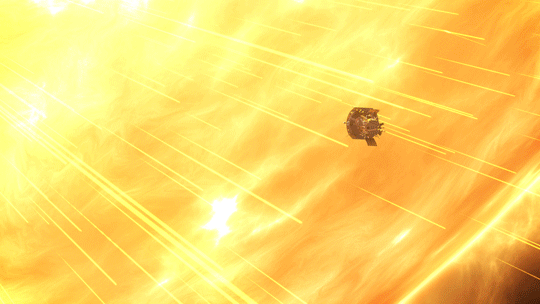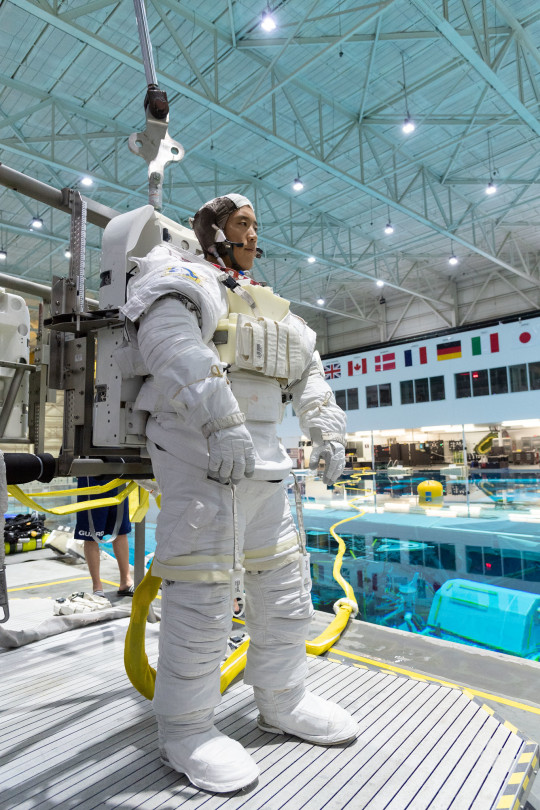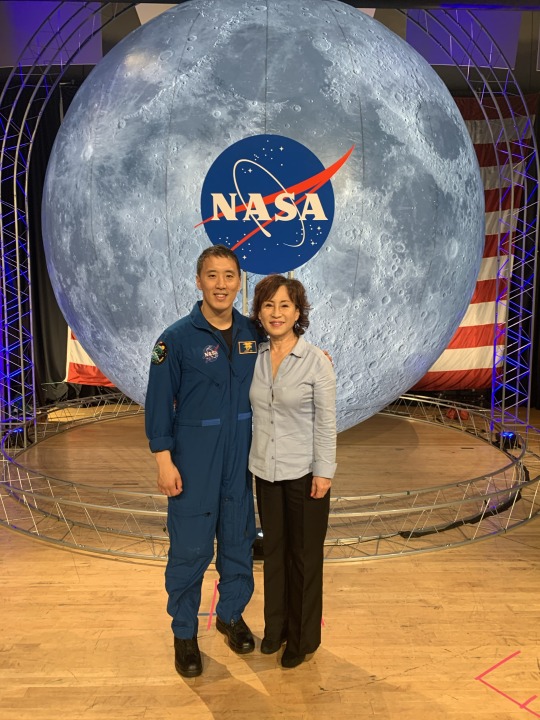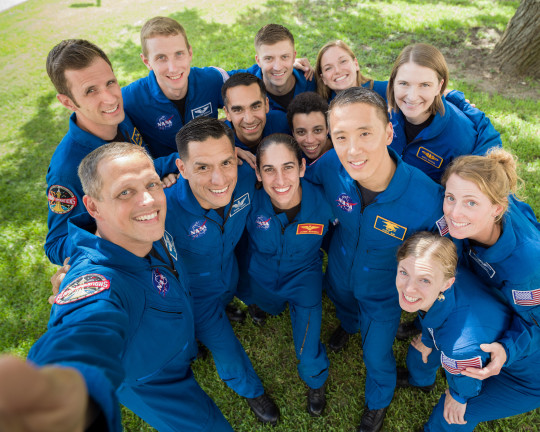Don't wanna be here? Send us removal request.
Text
Maya vs Blender: What to Choose for Your Animation Journey
Embarking on a journey into the world of 3D animation is an exciting, yet daunting task. With a variety of animation tools available, one of the biggest decisions aspiring animators and seasoned professionals face is choosing the right software. Two of the most popular choices in the industry are Maya and Blender. Both are powerful tools, each offering a unique set of features tailored to different needs and skill levels. In this article, we will dive into the key differences between Maya and Blender to help you make an informed decision for your next animation project.
User Interface and Experience
When it comes to animation software, first impressions matter. The user interface plays a crucial role in how efficiently you can work, especially with complex tasks.
Maya: Known for its sleek and professional interface, Maya is designed with industry professionals in mind. It offers a customizable layout that allows you to adjust the workspace to your specific workflow, enhancing your productivity and overall experience. However, this can sometimes make it feel a bit overwhelming for beginners.
Blender: On the other hand, Blender offers a user-friendly interface that caters to both beginners and seasoned professionals. Its intuitive navigation tools make it easy to jump into the software, and it can be easily tailored to suit individual needs. Blender's all-in-one interface simplifies the learning curve, especially for those just starting in the world of 3D animation.
Comparing Workflow and Processes
The way each software handles workflow and processes differs significantly.
Maya: Following a more traditional pipeline, Maya separates tasks into distinct modules for modeling, animation, and rendering. This structured workflow provides clarity and helps facilitate collaboration and project management, making it ideal for larger, team-based projects.
Blender: Blender takes a more integrated approach, combining all aspects of the animation process into a single interface. While this can be a huge advantage for individual users who prefer a streamlined process, it may feel a bit cluttered or overwhelming for some, especially those working on large teams.
Modeling Capabilities
Both Maya and Blender provide powerful tools for creating intricate 3D models, but there are some key differences to note.
Maya: Maya is renowned for its advanced modeling toolkit, which includes features like NURBS modeling, sculpting tools, and advanced polygon modeling techniques. These tools allow for precise control and are highly favored in professional environments where intricate models are required.
Blender: Blender also offers a comprehensive set of modeling tools, including sculpting, retopology, and procedural modeling options. While its modeling capabilities are incredibly powerful, some users may find that Maya’s advanced tools are more suited for highly detailed, professional-grade work.
Materials and Texturing
Texturing and materials are essential to creating a polished 3D model, and both Maya and Blender excel in this area.
Maya: Maya’s node-based material editor provides precise control over material properties, making it ideal for more complex shading workflows. This level of control is particularly valuable for users who need advanced customization in their textures.
Blender: Blender’s integrated material system offers a more user-friendly approach to texturing, with a library of pre-made materials and procedural textures that can speed up the workflow. While it’s more beginner-friendly, it still provides enough flexibility for advanced users.

Animation and Rigging
The animation and rigging process is crucial for bringing your 3D models to life. Here’s how Maya and Blender compare:
Maya: Maya is widely regarded as the industry standard for animation and rigging. Its robust animation tools include keyframe animation, procedural animation, and advanced character rigging capabilities. Maya also offers powerful tools for facial animation, muscle systems, and dynamic simulations.
Blender: Blender offers similar animation features, including a powerful armature system, inverse kinematics, and a variety of animation modifiers. Although its animation tools may not be as specialized as Maya’s, they are more than sufficient for most professional work and are perfect for indie developers and hobbyists.

Rendering
Rendering is the final step in the animation process, and both Maya and Blender deliver stunning results.
Maya: Maya uses Arnold as its default rendering engine. Known for its photorealistic quality and speed, Arnold is a favorite among professionals in the film and animation industries.
Blender: Blender’s Cycles renderer offers similar capabilities, supporting ray tracing, global illumination, and GPU acceleration. Cycles provides excellent rendering quality and is known for producing beautiful results in both still images and animations.
Conclusion: Maya vs Blender – Which One to Choose?
In the age-old debate of Maya vs Blender, there is no one-size-fits-all answer. Both software options offer unique features and capabilities that cater to different needs and preferences. Here's a quick summary to help you decide:
Maya: Best suited for professionals working in large teams or in industries where the highest level of detail, precision, and control is required (e.g., feature films, AAA games).
Blender: A great choice for independent artists, hobbyists, and small studios who want an all-in-one, beginner-friendly tool that doesn’t come with hefty licensing fees. It’s also an excellent option for those who prefer open-source software.
Ultimately, the choice between Maya and Blender comes down to your personal needs, project size, and workflow preferences. Both programs offer powerful features that can help bring your animations to life, so don’t hesitate to experiment and explore both to see which one best fits your style.
Ready to dive deeper into the world of animation? Check out our selection of 3D animation courses and start your animation adventure today—whether you're a Maya enthusiast or a Blender aficionado, there’s something for everyone!
2 notes
·
View notes
Text
What is Spatial Computing?
Spatial computing is a new type of computer interaction that uses our physical space as the interface. Instead of using a mouse and keyboard, we can use our hands, bodies, and voices to interact with computers. Spatial computing devices can track our movements in real-time and can be used to create new and immersive experiences.
One of the most promising applications of spatial computing is in the field of augmented reality (AR). AR overlays digital information on the real world. For example, you could use AR glasses to see directions overlaid on your windshield as you drive, or to see information about the stars as you look up at the night sky.
Spatial computing can also be used to create virtual reality (VR) experiences. VR creates a completely immersive experience that can be used for gaming, entertainment, and even training. VR headsets can track your movements and can be used to create realistic simulations of different environments.
Spatial computing is still in its early stages of development, but it has the potential to revolutionize the way we interact with computers.
Here are some of the benefits of spatial computing:
More natural and intuitive interaction with computers
New and immersive experiences
Increased productivity
Improved training and education
Here are some of the challenges of spatial computing:
The technology is still in its early stages of development
There are a limited number of spatial computing devices available
The cost of spatial computing devices can be high
There are privacy concerns associated with spatial computing
Overall, spatial computing is a promising new technology that has the potential to change the way we interact with computers. It is still early days, but the potential benefits are significant.
Here are some additional details about the Apple Vision Pro and spatial video that you can include in your blog post:
The Apple Vision Pro is a new type of headset that is designed for spatial computing. It has a high-resolution display, eye tracking, and hand tracking.
Spatial video is a new video format that is designed to be viewed in a spatial computing headset. It provides a more immersive viewing experience than traditional video formats.
1 note
·
View note
Text
Unreal Engine 5.3: Nanite Gets a Performance Boost, New AI Tools & More!
Epic Games recently released Unreal Engine 5.3, bringing a slew of exciting new features and enhancements. This update focuses on refining existing technologies, introducing powerful new AI tools, and improving overall workflow. Let's dive into some of the key highlights:
1. Nanite Performance Improvements:
Reduced Overdraw: Nanite, Unreal Engine's groundbreaking virtualized geometry system, has received significant performance optimizations.
Improved Culling: More efficient occlusion culling and view frustum culling significantly reduce the number of polygons rendered, leading to smoother frame rates, especially in complex scenes.
Enhanced Streaming: Nanite data is now streamed more efficiently, minimizing hitches and improving overall responsiveness.
2. New AI Tools:
Behavior Tree Editor Enhancements: The Behavior Tree Editor has been revamped with a cleaner interface and improved usability.
New AI Perception System: This system provides more robust and flexible AI perception capabilities, allowing developers to create more intelligent and responsive non-player characters (NPCs).
Enhanced Crowd Simulation: Improvements to crowd simulation enable more realistic and believable crowd behaviors, such as avoiding obstacles, following paths, and reacting to environmental cues.
3. Workflow Enhancements:
Improved World Partition: World Partition, a system for managing massive open worlds, has received several improvements, including better performance and easier setup.
Enhanced Niagara VFX Editor: The Niagara visual effects editor has been further refined with new features and a more intuitive workflow.
New Debugging Tools: New and improved debugging tools provide developers with more insights into their projects, helping them identify and fix performance bottlenecks more quickly.
4. Other Notable Features:
Support for Apple Silicon: Unreal Engine 5.3 now provides native support for Apple Silicon, enabling developers to take full advantage of the performance of Apple's latest processors.
New Rendering Features: Several new rendering features have been added, including improved ray tracing support and new options for controlling reflections.
0 notes
Text
Exploring the Outer Solar System with NASA's New Horizons
NASA’s New Horizons spacecraft, launched in 2006 with a primary mission to explore Pluto, continues to push the boundaries of our understanding of the outer solar system. Recently, NASA announced an exciting update to extend New Horizons’ mission beyond its original scope, focusing on further exploration of the Kuiper Belt and beyond.
Mission Extension and Objectives
In fiscal year 2025, New Horizons will transition to a low-activity mode optimized for gathering unique heliophysics data. This strategic shift allows the spacecraft to conserve fuel and reduce operational complexity while awaiting potential future missions, particularly targeting Kuiper Belt objects. Although no specific object is currently targeted, the flexibility of New Horizons’ extended mission allows for readiness in case a suitable candidate is identified.
Nicola Fox, associate administrator for NASA’s Science Mission Directorate, highlighted the significance of this mission extension: "The New Horizons mission has a unique position in our solar system to answer important questions about our heliosphere and provide extraordinary opportunities for multidisciplinary science for NASA and the scientific community."
Funding and Management
NASA’s Planetary Science Division will primarily fund the extended mission, with joint management from NASA’s Heliophysics and Planetary Science Divisions. This decision reflects NASA’s commitment to maximizing scientific returns from existing missions while carefully managing resources across its portfolio.
Historical Achievements and Future Prospects
Since its launch, New Horizons has revolutionized our understanding of distant celestial bodies. Beyond Pluto, it conducted a historic flyby of Arrokoth, a double-lobed Kuiper Belt object, offering insights into the early formation of our solar system. Managed by the Johns Hopkins University Applied Physics Laboratory, the mission exemplifies international collaboration and scientific excellence in space exploration.
Conclusion
As New Horizons continues its journey into the unknown reaches of the outer solar system, it promises further discoveries that will shape our understanding of planetary formation and evolution. With ongoing support from NASA and the scientific community, New Horizons remains a beacon of exploration, pushing the boundaries of human knowledge further than ever before.
Stay tuned as we follow New Horizons on its extended mission, uncovering the mysteries of our solar system’s distant frontier.
2 notes
·
View notes
Text
youtube
In his recent video, Jonas Ussing delves into the intriguing phenomenon of why contemporary digital VFX work often goes unnoticed and uncredited in major film productions. Using recent blockbuster hits as examples, Ussing sheds light on the concept of "invisible CGI" and explores why studios may not be entirely forthright when claiming that their scenes were shot entirely practically.
Starting with the case of Top Gun: Maverick, Ussing highlights clips and articles featuring individuals associated with the film proudly boasting about shooting every scene practically. While this claim holds true, Ussing reveals the disingenuous nature of such statements by pointing out that the film incorporates over 2,400 visual effects shots. Often, the practical footage serves merely as a reference for VFX artists, with the final version sometimes featuring only the human characters from the original shots.
Ussing shares a revealing clip in which Top Gun: Maverick editor Eddie Hamilton explains that the film's entire final dogfight was filmed using stand-in jets, later replaced by VFX artists. Hamilton emphasizes that many visual effects in the movie are "invisible," illustrating the seamless integration of digital elements.
The question arises: If the scenes are extensively modified using digital effects, why bother with practical filming? Ussing provides a concise answer: "Grounded in reality." He argues that capturing real aircraft in motion provides essential lighting references and ensures realistic movement for the CGI components.
Ussing goes on to cite examples from Blade Runner 2049, Fast X, and Stranger Things, showcasing instances where practical filming serves as a crucial foundation for collaborative efforts between practical and digital effects teams. According to Ussing and other industry professionals featured in the video, the synergy between these teams ultimately produces the most visually compelling effects.
While the argument for combining practical and digital elements is solid, Ussing leaves a critical question unanswered: "Why do studios conceal their use of CGI as if it were a closely guarded secret?" Teasing future insights, he announces the release of three more videos on the subject, leaving viewers eagerly anticipating the unraveling of this intriguing cinematic mystery.
0 notes
Text
Title: "30 Years of Jurassic Park: A Cinematic Revolution"
Introduction: This month, we celebrate the 30th anniversary of a film that forever changed the landscape of cinema: 1993's Jurassic Park. Directed by the legendary Steven Spielberg and based on Michael Crichton's novel of the same name, this groundbreaking film used pioneering computer-generated imagery (CGI) to bring dinosaurs to life, captivating audiences worldwide. In this article, we'll delve into the fascinating journey of how Jurassic Park not only revolutionized special-effects filmmaking but also paved the way for the CGI-driven productions that continue to dominate the industry today.
The Birth of Jurassic Park: Jurassic Park's origins can be traced back to 1983 when Michael Crichton first penned the screenplay. However, it wasn't until 1990, with the release of his bestselling novel, that the story gained widespread attention. Enter Steven Spielberg, a master of big-budget science-fiction filmmaking, known for classics like Jaws, E.T. the Extra-Terrestrial, and Raiders of the Lost Ark. Jurassic Park seemed like the perfect canvas for Spielberg's next cinematic masterpiece.
Adaptation and Innovation: Spielberg's adaptation of Jurassic Park, co-written by Crichton and David Koepp, made significant changes to the novel's ending, crafting a satisfying conclusion while leaving room for future exploration in the franchise. This strategic decision laid the foundation for what was to come.
Dinosaur Cinema Through the Ages: Jurassic Park wasn't the first film to feature dinosaurs, as 1933's King Kong demonstrated early attempts at pushing cinematic boundaries. These early efforts combined stop-motion animation with rear projection, paving the way for films like Journey to the Center of the Earth, The Lost World, and The Land That Time Forgot, which experimented with various techniques, including puppetry and prosthetics.
Jurassic Park's Pioneering Approach: Initially, Spielberg opted for a combination of stop-motion animation and animatronic puppets to bring dinosaurs to life. While these methods yielded promising results, the introduction of CGI technology would change the game entirely. Dennis Muren and the team at Industrial Light and Magic (ILM), known for their work on films like The Abyss and Terminator 2: Judgment Day, presented a revolutionary alternative: CGI modeling and animation.
The Magic of CGI: ILM's test sequences featuring skeletal dinosaurs and later, a lifelike Tyrannosaurus rex, convinced Spielberg and his team that CGI was the way forward. This technique involved building the dinosaur model from bones, adding muscle, and finally, skin. Despite the shift to CGI, the knowledge and expertise of the stop-motion team were invaluable, leading them to adapt and become skilled computer animators for the project.
The Perfect Blend: Jurassic Park seamlessly blended practical animatronics by Stan Winston with CGI animation by ILM. The result was a visual spectacle, exemplified in the iconic T. rex attack scene. Spielberg's masterful orchestration of this scene, from the suspenseful rainstorm buildup to the jaw-dropping T. rex reveal, delivered a range of emotions to the audience. The relatively brief CGI sections had a profound impact on the storytelling, enhancing the film's believability and cementing its status as a cinematic powerhouse.
The Impact: Upon its release, Jurassic Park shattered box office records and captivated audiences worldwide. The stampede of Gallimimus, the terrifying T. rex attack, and the suspenseful Velociraptor hunt left an indelible mark on viewers. The film also inspired a wave of similarly themed productions, including Disney's Dinosaur and the award-winning BBC series Walking with Dinosaurs. However, its most significant legacy was the revolution it sparked in CGI filmmaking.
CGI's Evolution: From those initial six minutes of animated dinosaurs, CGI has become an integral part of the film and television industry. It encompasses everything from digital image enhancement to the creation of entire CGI environments. Nearly all modern productions now incorporate some form of CGI, showcasing how Jurassic Park paved the way for three decades of fantasy filmmaking.
Conclusion: Jurassic Park's 30th anniversary serves as a testament to its enduring legacy. This cinematic masterpiece not only wowed audiences with its groundbreaking CGI but also catalyzed a revolution in filmmaking. As we celebrate this milestone, we reflect on how Jurassic Park brought dinosaurs back to life and forever altered the course of cinema.
0 notes
Text
Our Parker Solar Probe Just Touched the Sun!

For the first time in history, a spacecraft has touched the Sun. Our Parker Solar Probe flew right through the Sun’s atmosphere, the corona. (That’s the part of the Sun that we can see during a total solar eclipse.)

This marks one great step for Parker Solar Probe and one giant leap for solar science! Landing on the Moon helped scientists better understand how it was formed. Now, touching the Sun will help scientists understand our star and how it influences worlds across the solar system.

Unlike Earth, the Sun doesn’t have a solid surface (it’s a giant ball of seething, boiling gases). But the Sun does have a superheated atmosphere. Heat and pressure push solar material away from the Sun. Eventually, some of that material escapes the pull of the Sun’s gravity and magnetism and becomes the solar wind, which gusts through the entire solar system.
But where exactly does the Sun’s atmosphere end and the solar wind begin? We’ve never known for sure. Until now!

In April 2021, Parker Solar Probe swooped near the Sun. It passed through a massive plume of solar material in the corona. This was like flying into the eye of a hurricane. That flow of solar stuff — usually a powerful stream of particles — hit the brakes and went into slow-motion.
For the first time, Parker Solar Probe found itself in a place where the Sun’s magnetism and gravity were strong enough to stop solar material from escaping. That told scientists Parker Solar Probe had passed the boundary: On one side, space filled with solar wind, on the other, the Sun’s atmosphere.

Parker Solar Probe’s proximity to the Sun has led to another big discovery: the origin of switchbacks, zig-zag-shaped magnetic kinks in the solar wind.
These bizarre shapes were first observed in the 1990s. Then, in 2019, Parker Solar Probe revealed they were much more common than scientists first realized. But they still had questions, like where the switchbacks come from and how the Sun makes them.

Recently, Parker Solar Probe dug up two important clues. First, switchbacks tend to have lots of helium, which scientists know comes from the solar surface. And they come in patches.
Those patches lined up just right with magnetic funnels that appear on the Sun’s surface. Matching these clues up like puzzle pieces, scientists realized switchbacks must come from near the surface of the Sun.
Figuring out where switchbacks come from and how they form will help scientists understand how the Sun produces the solar wind. And that could clue us into one of the Sun’s biggest mysteries: why the Sun’s atmosphere is much, much hotter than the surface below.

Parker Solar Probe will fly closer and closer to the Sun. Who knows what else we’ll discover?
Make sure to follow us on Tumblr for your regular dose of space!
5K notes
·
View notes
Text
ICYMI: New sounds from Mars dropped! Turn the volume up to hear our Ingenuity Mars Helicopter flying on the Red Planet.
Captured by our Perseverance Mars Rover, this is the first time a spacecraft on another planet has recorded the sounds of a separate spacecraft. In this audio track, Perseverance used its SuperCam microphone to listen to the Ingenuity helicopter on April 30, 2021 as it flew on Mars for the fourth time.
With Perseverance parked 262 feet (80 meters) from the helicopter’s takeoff and landing spot, the mission wasn’t sure if the microphone would pick up any sound of the flight. Even during flight when the helicopter’s blades are spinning at 2,537 rpm, the sound is greatly muffled by the thin Martian atmosphere. It is further obscured by Martian wind gusts during the initial moments of the flight. Listen closely, though, and the helicopter’s hum can be heard faintly above the sound of those winds.
Make sure to follow us on Tumblr for your regular dose of space: http://nasa.tumblr.com.
1K notes
·
View notes
Note
What is the weirdest thing you had to account for when building the perseverance rover?
42K notes
·
View notes
Text
NASA has selected Falcon Heavy to launch the first two elements of the lunar Gateway together on one mission! http://nasa.gov/press-release/nasa-awards-contract-to-launch-initial-elements-for-lunar-outpost

0 notes
Text
“When injustice becomes law, resistance becomes duty.” - Thomas Jefferson
3 notes
·
View notes
Link
It’s time for Republican legislatures like the Pennsylvania legislature to step up and uphold the Constitution. Please read and spread everywhere!
0 notes
Quote
“Those who stand for nothing fall for everything.”
1 note
·
View note
Photo

NASA Spotlight: Astronaut Jonny Kim
Dr. Jonny Kim was selected by NASA to join the 2017 Astronaut Candidate Class. He reported for duty in August 2017 and having completed the initial astronaut candidate training is now eligible for mission assignments to the International Space Station, the Moon and eventually Mars. A U.S. Navy SEAL, Kim completed more than 100 combat operations. Kim was commissioned as a naval officer through an enlisted-to-officer program and earned his degree in mathematics at the University of San Diego and a doctorate of medicine at Harvard Medical School. Born and raised in Los Angeles, California to Korean-American immigrants, he enjoys spending time with his family, outdoor activities, academic and professional mentoring, strength training and lifelong learning.
Dr. Kim took some time from his job as a NASA astronaut to answer questions about his life and career! Enjoy:
Why did you apply to be an astronaut?
For many reasons. I think that humans are natural explorers. There is a calling in all of us to explore the unknown, push the boundaries and redefine what is possible. I’m drawn to the physical and mental challenges of space exploration and the teamwork required to complete such an objective. And finally, the opportunity to do something good for our country, for humanity, and to inspire the next generation of thinkers, leaders, explorers and scientists.
What was your favorite memory from astronaut training?

I’m a big believer that people can grow stronger bonds with each other when they succeed through shared hardship. And I think that developing relationships with one another is one of the best ways to forge successful team skills to be successful in any endeavor. With that context, I can tell you that my favorite memory from astronaut training was traversing the deep canyon slots of the Utah Canyon Lands for almost 2 weeks with my classmates. We hiked trails, climbed canyons, swam through deep, dark, cold and murky waters and forged through uncertainty, all while being together. This shared hardship was not only fun, but it helped us grow closer to one another. It’s one of the fondest memories I have when I think about my amazing classmates, and through that shared hardship, I know I can count on any one of my fellow astronauts when the going gets tough.
If you could play any song during launch, what would it be?
Don’t Stop Believin’ by Journey.
What advice would you give to your younger self?
I would tell myself to always follow your passion, never stature or money, because following a life of passion is long-term, sustainable and usually helps others. Be accountable for your mistakes and failures, and maintain the humility to learn from those mistakes and failures. And finally, I would caution myself that all worthwhile goals are difficult to obtain, but with the right attitude and hard work, you can accomplish anything.
How did your time as a Navy Seal impact your astronaut training?

Being a Naval Special Warfare Operator taught me that humans are capable of accomplishing ten times what their bodies and mind tell them. I learned there are no limits in life, and the biggest setback one can have is a poor attitude. I learned the value of strong leadership and accountability. I also learned the meaning of sacrifice, hardship, teamwork, love and compassion. All these traits helped me to develop the hard and soft skills required to be an astronaut.
How do we prepare medically for long duration missions? What tools, resources, medications do we anticipate needing, and how do we figure that out?
This is a great question and the answer is evolving. The way we answer this question is by being thoughtful and consulting the medical communities to weigh the pros and cons of every single decision we make regarding this. Mass plays an important factor, so we have to be mindful of everything we bring and how we train for it.
Who was the first person you called after being selected to be an astronaut?

It would have been my wife but she was with me when I heard the news. The first person I called was my mom.
What is one item from home that you would bring to space?
A picture of my wife and kids.
What does it mean to you to be part of the Artemis generation of astronauts?

It means that I have a duty and obligation to serve humanity’s best interests. To explore the unknown, push boundaries and redefine what’s possible. It means I have an immense opportunity to serve as an example and inspiration to our next generation of leaders and explorers. It also means there is a hard road ahead, and when the mission calls for us, we will be ready.
What are three personal items, besides photos of family and friends, that you would bring with you on your first spaceflight?
An automatic watch, because the engineering behind a timepiece is a beautiful thing. An American flag, because I proudly believe and uphold the principles and ideals our country stands for. And finally, a nice journal that I can put handwritten thoughts on.
Thank you for your time, and good luck on your first spaceflight assignment!
Follow Jonny Kim on Twitter and Instagram to keep up with his life as NASA astronaut.
It’s not too late to APPLY to #BeAnAstronaut! Applications close TOMORROW, March 31.
Make sure to follow us on Tumblr for your regular dose of space: http://nasa.tumblr.com.
3K notes
·
View notes
Text
Dear America: Preserve These Things For The Love Of God

They say that in Europe our things are tiny and that in America your things are super-sized, and that’s a dangerous statement, prone to error when referring to anything other than the size of our Coca-Colas.
Any further debate could lead to a conflict of unprecedented proportions and distract us from the real issue: Here in Europe we are jealous of a lot of what you have in the United States of America. In particular, three things: God, liberty and civil society. In the social democratic Europe we live in, these three pillars have all but disappeared like the sun setting at the dusk of a civilization. In their stead we are left with secularism, conditional freedom and an all-encompassing state that demands money from us day and night in the form of taxes, while all we can do is shrug our shoulders, pay up and say, as did Bartleby: “I’d prefer no to.”
I write these lines, sit in a German alehouse “Cervecería Alemana” in Plaza Santa Ana in Madrid, an old cafe in which the dazzling Ava Gardner whittled away hours when she was living in Madrid, and in which Hemingway often sought refuge in good beer and beautiful people common to so many other bars in Europe. Midway through the 20th century another celebrated writer would also sit here. The Spaniard, Enrique Jardiel Poncela, was a successful comedian that, just over 30, relocated to the United States to write scripts for Fox studios.
He had such a penchant for tucking himself away in a bar in Madrid to write, that they had to build his office in Hollywood to resemble one, for him to be inspired. Jardiel hated the Hollywood vibe and on returning to Spain said that Americans were like “big kids,” although I’m not sure that’s actually a criticism. He also wrote that if a European wanted to understand America, he would have to buy, on arrival there, a “Bible, an automobile and a corkscrew.”
The corkscrew bit troubles me, even though these were the ’30s. By the way, his epitaph read: “If you want everyone to praise you, die.” When he did die, before his corpse had grown cold, everyone did praise him. And immediately afterward, not having ever displayed any political affiliation, everyone forgot about him. If there is anything this brilliant Spanish comedian got right, it was to be free, gaining himself enmity from both left and right. The European press has never been made for freedom, which is nothing other than the ability to say and do whatever you want and the strength to shoulder the consequences.
A student reaches for an inflated globe during a “Fridays for Future” protest for urgent climate action on May 24, 2019 in Muenster, northwestern Germany.
We envy almost everything about the press in America, from its independence from the government to the bravery shown by many of its greatest journalists, often opting for honor in harakiri — in ink — when the cause is a worthy one; sometimes it’s a sad collective suicide, like when they try to portray Nancy Pelosi as a rising star in the practice of origami. But even a despicable silver-screen villain like Walter Matthau from “The Front Page” captivates us, because in his madness we find an apt description of the wild press that was needed to create the brilliant myth of pressrooms littered by whisky filled flasks, and incredibly unstable individuals trying to keep the government at bay.
Half the things that opinion-makers in the States would make the secular public in secular Europe shake in their boots and cross themselves, and that’s another thing that you got right: It’s important to call an imbecile an imbecile if you don’t you run the risk of confusing the public. And nothing describes the average European: confused and stunned. We’re not even well-manipulated à la Soviet, because even though the left wing tries whenever it can, the European center-right works ceaselessly toward that postmodern sickness called appeasement.
The outcome is that the right wing receives the brunt of the insults, the left being better liars, and nobody can freely say whatever they want in a newspaper without first reading carefully the European Single Thought Law. There are 70 million Twitter users just waiting to write your column, coming close to choking on their own bile as they spit insults at you, while your own contribution to social unrest is safely censored. If you’re right wing, they’ll come down on you like a ton of bricks.
To disagree, to think freely, to stand out, is to dig your own grave in modern Europe. There is a very European bias toward the bureaucratic structuring of private initiatives that becomes truly exasperating. Even in love.
Maybe because of liberty, the United States helps people become millionaires while Europe hinders them. Sometimes quite embarrassingly so. Just one example. Spain’s new social communist government has threatened to cripple rich people with taxes. As a result, an exodus to Portugal has begun. What does this government do? Rectify? No. They threaten with consequences against those leaving. This is all we could expect from a government whose vice president criticizes and insults the owner of Inditex, my brilliant fellow countryman Amancio Ortega, for having donated expensive, latest generation cancer treatment machines, to Spanish hospitals. According to Spanish Vice President Pablo Iglesias, the Spanish public health service doesn’t need “handouts” from the rich. Maybe he’s right. But the Spanish cancer patients sure do. Some people just keep proving Jardiel Poncelaright again when he said: “Those that don’t dare to be intelligent, become politicians.” There are exceptions, but they’re not in Pedro Sánchez’s government.
Spanish far-left Podemos party leader Pablo Iglesias gives a speech during the first day of the parliamentary investiture debate to vote through a prime minister, at the Spanish Congress (Las Cortes) on July 22, 2019, in Madrid.
As a rule, the States’ civil society is healthier than the European because it’s careful not to devote itself to mass ideological prostitution. I said “mass,” I’m not here to naively canonise the whole country, ignoring that you’ve had presidents whose main virtue was knowing how to dance salsa. But even then it’s different. Your genuinely democratic culture — impossible to export– makes it easy to get rid of cretins that manage to reach office.
In Europe, the more independent civic leaders raise their voices and lead all they can, but only until they’re gobbled up by one party or another. Then they become accommodated and their voices become muddled. That might very well be the problem: this very European obsession with security, be it employment, unemployment, social life, housing or relationships. Everything has to be as secure and predictable as German engineering, which is why there exists a certain disdain for the American dream. If America can be reduced to a hamburger, part of the European elite can be reduced to the unassembled pieces of a wardrobe from Ikea; if they ever manage to get it together, in an armed conflict, you’ll find me on the hamburger’s side.
Somehow mobility and meritocracy muddy the social democrat dream, which as with communism, needs poor and hungry to survive. Sometimes I wonder why modern Europeans are so enthusiastic about living when most of their state tutored, predictable and bureaucratic lives are a bore. Obviously Mediterranean Europe is the exception; boredom is impossible there.
All of this has a tragic consequence. The lack of a sense of humor extends like a plague throughout the continent. Europe has lost its sense of humor and that’s it’s drama. You only need see that safety warnings printed on any appliance produced in the European Union to understand how total safety and security is an illness. You can’t take your job so seriously. If you sell phone batteries, don’t place a warning on them, in 10 different languages, asking the buyer not to nibble on it. Don’t make a fool of yourself in 10 different languages. The legal cobweb covering the Old Continent making you do it is no excuse. Exporting illegal batteries is better than looking like a world-class idiot all over the world.
But Europe takes itself too seriously. Everything is regulated in its pocket-sized nations. Everything is vital. Everything is serious. Everything is exceedingly dull. Americans can joke and laugh about filling some dictator full of holes without tearing their hair out and crying, which is exactly what the French, Belgian or the Danes do. The Dutch aren’t laughing so loud this week because some genius in the government has decided it would be a good idea to legalize an anti–old people pill. Suddenly, Dutch progressive OAPs, that have been smoking spliffs since their teens, feel less enthusiastic about death-dealing because they’ve realized that in this year’s Halloween parties they will be the dead.
Incidentally, proof of Europe’s idiotization is that, given a choice as to what we import from the United States, instead of choosing liberty, wealth or the size of the damn ice in our drinks, we chose Halloween, which we would gladly send back to you in a box with its corresponding bow and a thank-you note “always thinking of you.”
Something else we envy. When a policeman shoots down a dangerous terrorist, you all ask how the policeman is and swell with pride over his heroism. In Europe though, public opinion and the media react differently:
Couldn’t he have spared the man’s life?
Was it proportional?
Did he read him his rights?
He wasn’t gunned down for wearing explosives and six machetes, he was murdered for being an Arab.
The same happens with military ops. If no one botches it, America will still rally behind their military when they are deployed, even if there has been political dissent. These small shows of unison that upstage the differences, around basic issues, are what make a nation great. Small things can be huge.
Maybe because Americans don’t believe that the state will save them, and much less guarantee them everlasting life within the foreseeable future, they still choose to trust in God. And that’s understandable. When one sees Bernie Sanders and thinks, if an electoral catastrophe were to occur, that one’s life would be in his hands, it’s a huge relief to know you always have God to save you.
What’s more, God is present daily in the lives of men that, as with any civilization, want to transcend their own arrogance. Which is why, when a politician finishes speaking with a “God bless America!” no one is surprised or shocked. It even sounds good, magnificent, glorious. On the other hand, in Europe, if one finishes his speech with a “God bless Sweden!” or “God bless Denmark!” it just doesn’t work. It’s almost like saying “God bless the International Monetary Fund!” It doesn’t even sound good. What’s more you’ll instantly see people rise from their seats and call out:
Why do you say “God”? I’m an atheist. It’s offensive.
Why do you say “God” and not Goddess? Chauvinist! It’s offensive.
Why do you say “God” and not Mother Nature? I identify as a rabbit. Ethnocentrist! It’s offensive.
In the end you just give up, leave God out of it, but reference Satan because you want to send the whole world to hell. But then, once more, another uproar, like a cat fight on Twitter: Christianocentric! Islamophobe. Allah is great. It’s offensive. That’s when you decide to put an end to the event and hang yourself in a toilet stall. That’s how things are in Europe.
Of course, Europe also has the History, it’s still at the origin of our civilization, illustrious ruins, Spanish literature, British humor, Houllebecq and Swedish women. But it also has its fair share of disappointments. France was supposed to be fun. All of my damned bohemians burned Paris down between opium dens, poetry and whisky. It was all just an illusion. These days their grandchildren don’t go out at night, they only read the state’s Official Bulletin and instead of alcohol, they down copious amounts of ecological tea in vegan tea shops where they extract the tea by caressing the leaves.
What about Spain? My country is another matter. Spaniards are only Europeans during work hours. From six in the afternoon onward — Brussels time — we stop being European and we do whatever we feel like until 8 a.m. the next day. This makes other Europeans feel awkward when they come to do business here. They would much prefer to see a hoard of fools following one another mindlessly through the streets like Lemmings, that strange video game from the ’80s. I mean they would rather be in Berlin than Madrid. We don’t do it because we love partying, but to safeguard the essence of ancient Europe, when Romans would commit the seven deadly sins all together, leave work mid-afternoon for a siesta and always found an excuse for a toast (not the bread one). Our sacred duty as Spaniards is to keep these worthy traditions alive, whatever Brussels says.
It’s not that Europe is a bad idea, just the same as the — oh so different — United States isn’t either. Europe, and I mean the European Union, is a place where we can sit down and talk instead of being gunned down and invaded. It has its benefits, especially in what concerns public spending on weapons. But neither Americans nor Europeans can permit themselves to be complacent. Europe needs to recover its identity or Brexit will be just the beginning, and America needs to keep an eye on what’s happening over here, because no one’s immune to a plague of stupid people corrupting the power. Although I suspect that in the end, whatever happens in the future, here in Europe, we’ll always be jealous of the size of your missiles, Reagan’s politics, Scarlett Johansson’s beauty, George Clooney’s elegance and having a president who tweets all in caps.
1 note
·
View note
Text
The Rover Doctor is in: The Anatomy of a NASA Human Exploration Rover Challenge Rover
Exploration and inspiration collide head-on in our Human Exploration Rover Challenge held near Marshall Space Flight Center in Huntsville, Alabama, each April. The annual competition challenges student teams from around the world to design, build and drive a human-powered rover over a punishing half-mile course with tasks and obstacles similar to what our astronauts will likely have on missions to the Moon, Mars and beyond.

The anatomy of the rover is crucial to success. Take a look at a few of the vital systems your rover will need to survive the challenge!
The Chassis

A rover’s chassis is its skeleton and serves as the framework that all of the other rover systems attach to. The design of that skeleton incorporates many factors: How will your steering and braking work? Will your drivers sit beside each other, front-to-back or will they be offset? How high should they sit? How many wheels will your rover have? All of those decisions dictate the design of your rover’s chassis.
Wheels

Speaking of wheels, what will yours look like? The Rover Challenge course features slick surfaces, soft dunes, rocky craters and steep hills – meaning your custom-designed wheels must be capable of handling diverse landscapes, just as they would on the Moon and Mars. Carefully cut wood and cardboard, hammer-formed metal and even 3-D printed polymers have all traversed the course in past competitions.
Drivetrain

You’ve got your chassis design. Your wheels are good to go. Now you have to have a system to transfer the energy from your drivers to the wheels – the drivetrain. A good drivetrain will help ensure your rover crosses the finish line under the 8-minute time limit. Teams are encouraged to innovate and think outside the traditional bike chain-based systems that are often used and often fail. Exploration of the Moon and Mars will require new, robust designs to explore their surfaces. New ratchet systems and geared drivetrains explored the Rover Challenge course in 2019.
Colors and Gear

Every good rover needs a cool look. Whether you paint it your school colors, fly your country’s flag or decorate it to support those fighting cancer (Lima High School, above, was inspired by those fighting cancer), your rover and your uniform help tell your story to all those watching and cheering you on. Have fun with it!

Are you ready to conquer the Rover Challenge course? Join us in Huntsville this spring! Rover Challenge registration is open until January 16, 2020 for teams based in the United States.
If building rovers isn’t your space jam, we have other Artemis Challenges that allow you to be a part of the NASA team – check them out here.

Want to learn about our Artemis program that will land the first woman and next man on the Moon by 2024? Go here to read about how NASA, academia and industry and international partners will use innovative technologies to explore more of the lunar surface than ever before. Through collaborations with our commercial, international and academic partners, we will establish sustainable lunar exploration by 2028, using what we learn to take astronauts to Mars.
The students competing in our Human Exploration Rover Challenge are paramount to that exploration and will play a vital role in helping NASA and all of humanity explore space like we’ve never done before!
Make sure to follow us on Tumblr for your regular dose of space: http://nasa.tumblr.com
852 notes
·
View notes